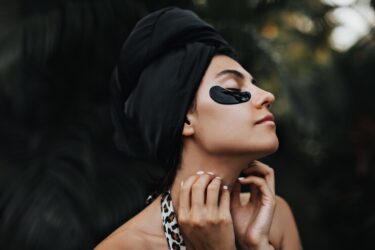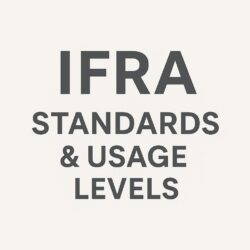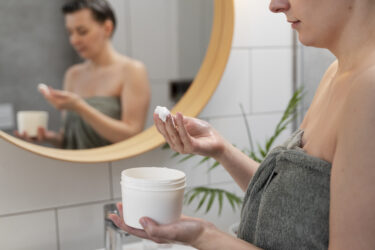Heritage Beauty Trend 2025:
In 2025, the beauty industry is undergoing a transformative shift as consumers increasingly seek products that honor cultural traditions while embracing modern innovation. The Heritage Beauty Trend 2025 encapsulates this movement, blending ancestral beauty practices with cutting-edge technology to create products that are both effective and meaningful. This trend emphasizes authenticity, sustainability, and inclusivity, reshaping how beauty is perceived and practiced globally.
What Is the Heritage Beauty Trend?
The Heritage Beauty Trend involves the revival and modernization of traditional beauty practices from various cultures. It integrates ancestral beauty rituals, ingredients, and philosophies into modern skincare and haircare products. This approach not only honors cultural legacies but also introduces consumers to effective, natural, and sustainable beauty solutions.
Understanding ingredient sensitivities is essential when blending traditional and modern skincare approaches, especially with actives like retinol. Learn more about managing retinol and acid sensitivity here.
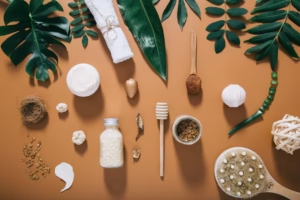
Key Characteristics:
Ancestral Beauty: Incorporation of age-old practices like Ayurveda, Traditional Chinese Medicine, and African herbal remedies.
Traditional Beauty: Use of natural ingredients such as shea butter, camellia oil, and ginseng, known for their historical significance and efficacy.
Cultural Skincare: Products and routines inspired by cultural rituals, promoting a sense of identity and belonging.
Sustainable Beauty Trends: Emphasis on eco-friendly sourcing, ethical production, and minimal environmental impact.
Beauty Innovation: Fusion of traditional knowledge with modern science to create effective and safe beauty products.

Why Is It Relevant in 2025?
The Heritage Beauty Trend is booming in 2025 due to key factors shaping consumer behavior and industry innovation.
Consumer Demand for Authenticity
Modern buyers increasingly prioritize transparency and genuine product stories. A 2024 NielsenIQ report shows 73% of consumers prefer brands honest about sourcing and production, fueling demand for authentic heritage ingredients that build trust.
Cultural Appreciation
Interest in diverse cultural beauty rituals is rising. The Journal of Consumer Culture (2023) reports a 30% increase in launches featuring traditional ingredients, reflecting a broader embrace of global beauty practices and respect for ancient wisdom.
Sustainability Concerns
Consumers want eco-friendly products aligned with sustainability goals. According to the 2024 Global Cosmetics Sustainability Report, 68% prefer sustainably sourced ingredients. Heritage beauty’s focus on natural, renewable ingredients fits perfectly with this shift.
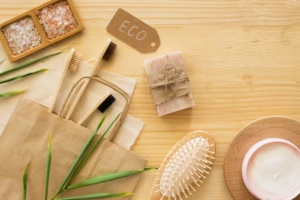
Technological Advancements
Modern science enhances traditional ingredients through advanced extraction and delivery technologies. The International Journal of Cosmetic Science (2025) notes that such innovations can boost ingredient absorption and effectiveness by up to 40%, blending heritage with proven performance.
Examples of Heritage Beauty in Action
Innovative ingredients like Greyverse are gaining traction for their natural approach to hair health and color preservation. Read how it can transform hair naturally here.
The Body Shop
A pioneer in ethical beauty, The Body Shop has long incorporated natural ingredients and traditional practices into its product lines. Their commitment to sustainability and community trade reflects the core principles of the Heritage Beauty Trend.
Fable & Mane
Inspired by Ayurvedic rituals, Fable & Mane offers haircare products that blend traditional Indian ingredients with modern formulations. Their HoliRoots™ collection, featuring the Dashmool complex, exemplifies this fusion of heritage and innovation.
For more about their innovative blend of Ayurvedic traditions with modern haircare, visit Fable & Mane.
Ranavat
Ranavat combines ancient Ayurvedic practices with scientific research to create luxurious skincare and haircare products. Their use of saffron and other traditional ingredients showcases the potential of heritage-based formulations.
Shaz & Kiks
Founded by sisters Shaz and Kiku, this brand draws from their Indian heritage to develop haircare products rooted in Ayurvedic principles. Their emphasis on natural ingredients and holistic wellness aligns with the Heritage Beauty Trend.
Discover their full range and philosophy on traditional haircare at Shaz & Kiks.
How Beauty Brands Can Respond to the Trend
Embrace Cultural Narratives
To genuinely connect with the Heritage Beauty Trend, brands must collaborate closely with cultural experts and communities. This means more than just borrowing ingredients—it requires respectful storytelling that honors the history and origins of traditional beauty practices.
By acknowledging the cultural roots and sharing authentic narratives, brands build deeper trust and meaningful connections with consumers who value heritage and transparency.
Prioritize Sustainable Sourcing
Incorporating sustainably sourced, natural ingredients is essential in today’s eco-conscious market. Sustainable sourcing minimizes environmental impact by ensuring ingredients are harvested responsibly, preserving biodiversity and local ecosystems. This practice aligns with growing consumer demand for products that support environmental stewardship.
Moreover, sustainable sourcing strengthens supply chain transparency, providing brands with verifiable ethical credentials that today’s buyers actively seek. For a comprehensive understanding of sustainable sourcing practices and their importance in modern supply chains, see this detailed overview on sustainable sourcing.
Innovate with Tradition
The future of heritage beauty lies in blending time-tested traditional knowledge with cutting-edge scientific advancements. By applying modern extraction techniques, bioengineering, and formulation technologies, brands can enhance the efficacy, stability, and safety of traditional ingredients.
This fusion creates innovative skincare solutions that maintain cultural significance while delivering measurable results, appealing to both heritage enthusiasts and scientifically minded consumers.
For beauty brands and formulators aiming to improve ingredient transparency, decoding INCI names is a crucial step. Explore a detailed guide on decoding INCI names here.
Educate Consumers
An informed customer is a loyal customer. Beauty brands should invest in educational content that explains the cultural background, history, and skincare benefits of traditional ingredients. Transparent communication empowers consumers, fosters appreciation for the product’s origins, and enhances brand credibility.
Educational campaigns—through blogs, videos, and social media—can transform heritage beauty from a trend into a lasting movement by deepening consumer understanding and trust.
The Future of Heritage Beauty
As the beauty industry continues to evolve, the Heritage Beauty Trend is expected to grow, fostering greater inclusivity and sustainability. By honoring traditional practices and integrating them with modern innovations, brands can create meaningful connections with consumers and contribute to a more diverse and responsible beauty landscape.
The integration of biotechnology in skincare is reshaping heritage beauty, merging tradition with cutting-edge innovation. Discover more about the rise of biotech skincare here.

FAQs
What is the Heritage Beauty Trend?
The Heritage Beauty Trend involves integrating traditional beauty practices and ingredients from various cultures into modern skincare and haircare products, emphasizing authenticity, sustainability, and cultural appreciation.
Why is the Heritage Beauty Trend gaining popularity?
Consumers are seeking authentic, natural, and sustainable beauty solutions. The Heritage Beauty Trend meets these demands by honoring cultural traditions and utilizing time-tested ingredients.
How can brands authentically incorporate heritage practices?
Brands should collaborate with cultural experts, source ingredients ethically, and provide transparent information about the origins and benefits of traditional practices.
Are heritage beauty products suitable for all skin types?
Many heritage beauty products use natural ingredients known for their gentle and nourishing properties, making them suitable for various skin types. However, consumers should always check product formulations and consult with professionals if needed.
What are some common ingredients in heritage beauty products?
Common ingredients include shea butter, camellia oil, ginseng, saffron, and various herbal extracts known for their historical use in traditional beauty rituals.
Conclusion
The Heritage Beauty Trend 2025 signifies a powerful shift towards cultural appreciation, sustainability, and innovation in the beauty industry. By embracing ancestral wisdom and integrating it with modern science, brands can create meaningful, effective, and inclusive products.
This trend not only preserves tradition but also meets the growing demand for authenticity and transparency. As consumers continue to seek deeper connections with their roots, heritage beauty is poised to remain a dominant force. It represents the future of beauty—rooted in the past, refined for today.
